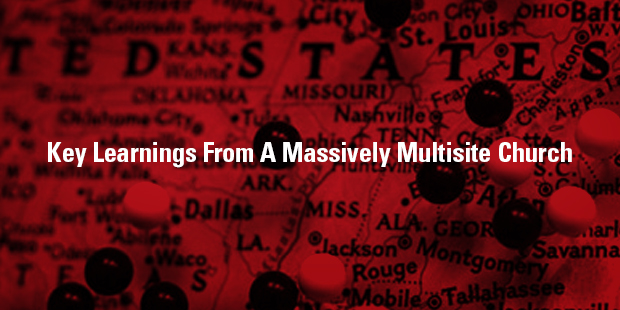
16 Ideas for Better Facebook Live Videos
Is your church doing regular Facebook Live broadcasts? Why or why not? The popularity of this tool continues to grow and flourish, and it is a powerful communication method that your church should be taking advantage of. While the service has been around for almost three years, which is comparative to something like 30 “social media years”, there are still a lot of churches that aren’t utilizing this tool to reach people.
That being the case, the goal of this article is to convince you to start doing or do more Facebook Live videos. You’ve been warned.
Facebook is still the default social media network for many people in our communities. In fact, in most communities, 68% of adults are accessing the platform regularly. [ref] Stop and think about that. If two-thirds of the people in your town participated in the same thing on a regular basis, wouldn’t you want to know more about it? Even further, wouldn’t you want to figure out how to best use that trend to see people connected to your church and the message of Jesus? Within Facebook, live videos continue to be a thriving and growing feature of the platform. In fact, 2 billion people have watched Facebook Live broadcasts. [ref] And the number keeps growing every day!
4 Ingredients of Great Facebook Live Videos for Your Church
Here are the four basic elements that your Facebook Live video broadcasts need to have to help you leverage this channel to reach people.
- A “Hook” // You need to start with an interesting premise or quick hit idea at the beginning of the video that draws people in to watch more. Like the title of a great news article, a good hook’s job is to grab and hold people’s attention.
- Educate or Entertain? // Your video needs to either entertain people by making them laugh or it needs to educate them by revealing something. If you use Facebook Live to just “advertise” what’s coming up at your church your audience will tune out. How can you provide value to them? Use one of these approaches to do so.
- Show, Don’t Tell // This is a visual medium so leverage it. Broadcast from a visually interesting location. Show a prop on camera that will get people’s attention. Avoid the temptation to just be a “talking head” on the video.
- Call to Action // What are you asking people to “do” because of the video? What is their next step after watching the video? Don’t let people just sit back and passively consume the content but entice them to take a next step!
Facebook is Still Pushing Live Video
It’s no secret that Facebook continues to encourage people to produce, view, and engage with live videos. In a very real way it seems like Facebook is transforming itself into a video-driven platform. We have all noticed that our “organic” posts on Facebook being viewed less and less. However, the platform continues to push the video content form in front of our audiences. Some churches have reported as much as 200 times more views on a Facebook Live video over a typical status update post.
“Live is like having a TV camera in your pocket. Anyone with a phone now has the power to broadcast to anyone in the world,” CEO Mark Zuckerberg has said. “This is a big shift in how we communicate, and it’s going to create new opportunities for people to come together.” [ref]
People Love Behind-the-Scenes Videos
87% of audiences would prefer to watch online videos if it included more behind-the-scenes content than a standard TV broadcast. [ref] One of the major “stickiness factors” of live videos is that we get access to things that we don’t normally get to see. Take your audience backstage at your church and allow them to experience something that is usually only experienced by a small group of leaders or community members.
3 Examples of Behind-the-Scenes Videos
- Mid-week Message Prep // Do you prepare your messages in a unique location? Take us there with a quick two minute video to show people what that space looks like and discuss the upcoming week. Use this opportunity to ask a question or two about an upcoming message to draw people in and help you write that message!
- Early Morning “Backstage” // More and more, we’re beginning to see it be a “standard practice” of churches to do a quick early morning video inviting people to come to church. Resist the urge to do these videos from the lobby, and take us backstage to see the behind-the-scenes activities of the morning prep. Is there a cleaning crew vacuuming the hallways? Is the guest services team planning something extra special this morning? What does it look like from the “tech booth” while the worship team rehearses? Find an interesting visual hook that people don’t normally see and show it to them!
- Team Training // Training volunteers and leaders is a critical part of any growing church. Why not shoot a quick live video from your next training event? You could invite a person who just experienced the event onto camera and they could share what they learned! Sometimes at training events we do an “appreciation” segment where we go out of our way to thank a particular volunteer. What better way to turn up the appreciation by broadcasting it live as well!
Live Positions Your Church with the “Big Leagues”
Increasingly, huge brands and entertainment organizations are leveraging the exact same tools to broadcast to their audiences. For example, Facebook has secured exclusive rights to 25 MLB games this season [ref]. When your church chooses to leverage this channel, it puts your ministry on par with other brands.
While it’s a great thing to have your live broadcasts compete alongside some of the largest content providers in the world, it does require us to continually increase the quality of our content. We need to develop best practices for the type of content we’re providing as well as improve the technical quality of our broadcasts. Your church will need to pay particular attention to ensure that you are evaluating how the content is being received and what is working “best” to increase engagement with your community.
3 Tools to Increase the Quality of Your Church’s Live Videos
- Rode Lav Mic // This mic provides great quality audio for a single presenter on a live video from your phone. It not only provides clear audio but requires little technical set up! Just plug the mic into the headphone jack of your phone and then clip it to the presenter’s shirt.
- Mevo Camera // This is a clever, super high definition camera with a novel smartphone interface. It allows the users to present what looks like a “multi-camera” shot all with a single lens through some fancy programming. This product is great for when you want to shoot something six to ten feet from the camera.
- Selfie Light Ring // Sometimes when you’re backstage at the church there just isn’t enough lighting to allow your audience to clearly see the presenter. This little device attaches directly to your phone and helps light up a subject when in selfie mode.
Engagement is 10X Higher on Live vs. Pre-Recorded Video
Have you ever stepped back and asked why your church does anything on social media? What’s the goal of all this effort you put into these channels? It’s all about engagement! We are attempting to connect with people in churches and the surrounding community in a way that draws them in to dialogue and connection. Live videos are the highest form of engagement in social media today. In fact, viewers comment “more than 10 times more on Facebook Live videos than regular ones.” [ref] The reason social media networks are pushing this content is because they know it’s engaging, which is what we want!
3 Easy Ways to Drive Up Engagement
- Lead with a Question // In the first ten seconds of your video lead with a question that you want your audience to answer. What’s your favorite worship song that we’ve been singing at our church these days? If we could talk about one thing in our messages, what would you want that to be? What would you love to see us change in our kids ministry? A sticky question drives people to stay connected with the video and gives them the opportunity to interact and contribute.
- Ask for the Share // Again, early on in the video the best practice is to ask people to share the video so the content can reach more people. Don’t beat around the bush but directly ask people to share the video so their friends can see it too. Point to where the “share” button is and ask them!
- Give a Gift // At the end of the video, tell people to do something in order to receive a free gift from the host. For example, the first ten people to comment with a fact or point from the live broadcast could receive a gift certificate to a local coffee shop.
Online Live Video is Leading to Offline Engagement
Social media isn’t the destination but a stop along the road! Ultimately, we’re using these tools to encourage people to connect at our “offline” locations. There are industries that demonstrate that live video is an effective tool for driving “real world” engagement, not just “likes, comments, and shares”. For instance, 67% of audiences who watched a live stream purchased a ticket to a similar offline event the next time it occurred. [ref] Real estate mogul and social media guru Grant Cardone used a swarm of live videos to drive over 9,000 people to his conference in 2018. [ref] It would seem like live video is a shortcut for building an online community that “knows, likes, and trusts” a communicator or organization. That social capital can then be translated into real-world responses.
3 Ways to Bridge Offline Engagement
- Show Your Campuses // Use your live streams to walk people through the Sunday morning experience. Park in your parking lot and then walk through various entrances to help people picture themselves arriving.
- Introduce Pastoral Staff // Oftentimes, it seems like churches are using secondary team members “on screen” during live videos. However, brands that are moving people to offline engagement have the primary communicator and “face of the brand” at the center of their live videos.
- Call to Action // Don’t be afraid to ask people for an “offline” action! Ask your audience to join the church at an upcoming special event. Ask them if they are willing to get in their cars and join the church at the next service. A well-timed call to action can motivate more people to connect with your church!

Tags: Facebook Live, Rich Birch



























